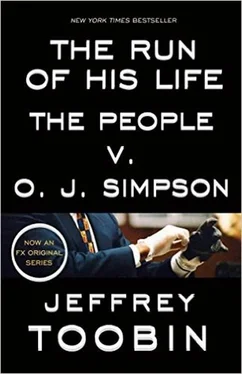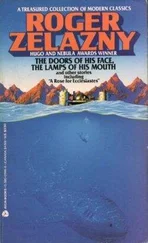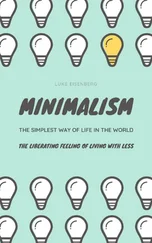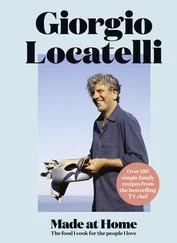Darden closed for the night by recalling one of the briefest witnesses in the trial-the district attorney’s investigator who drilled open Nicole’s safe-deposit box after her death. There wasn’t much in there: her will; letters of apology from O.J. after his 1989 conviction; and the photographs of Nicole’s beaten face from that incident. But Darden asserted that Nicole had a larger purpose for preserving those few items in the way she did. “She put those things there for a reason,” Darden said quietly. “She is leaving you a road map to let you know who it is who will eventually kill her. She knew in 1989. She knew it. And she wants you to know it.”

The defense team held weekly meetings around a big table in Cochran’s suite of offices. At these conclaves, Cochran would often take on the persona of a preacher and declaim in mock solemnity about each lawyer’s assignment. One day near the end of the case, Cochran was telling Bailey his plans for how they were going to win. “I will bring the brothers and sisters to the table of acquittal,” he told Bailey, “but you, sir, are responsible for the Demon.”
The Demon was the defense team’s nickname for juror number three, Anise Aschenbach, a sixty-year-old woman who was one of only two whites left on the panel. The self-confident and poised Aschenbach had said during jury selection that her advocacy once changed the minds of all eleven of her fellow jurors in another case. Throughout the trial, Aschenbach was the one juror the defense feared might hold out for conviction. Along the way, Cochran and Bailey sensed that she particularly admired Bailey’s courtroom style, which led to Cochran’s instruction to him. (In fact, the defense missed Aschenbach’s signals about Bailey. “I couldn’t stand that creep,” she told me after the trial.)
Still, the admonition to Bailey illustrated how Johnnie Cochran saw his role in the case. He would take care of the nine black jurors-the brothers and sisters-and one of the white lawyers could handle the rest. In the waning days of the trial, Shapiro lobbied Simpson to be allowed to deliver the second defense summation, but Cochran and the rest of the defense team shot down that idea. Shapiro didn’t know the facts well enough; he would only be reading what Barry Scheck had prepared for him. Simpson, too, thought Scheck deserved the white-lawyer slot. (Bailey had played too small a role in the trial even to be considered.)
When Cochran began his address to the jury on Wednesday, September 27, he started in a conventional way. He attacked the prosecutors’ time line, principally their theory that Simpson had killed the two victims at 10:15 P.M. He dwelled on the glove demonstration and used a catchy phrase that had been suggested to him by Gerry Uelman: “If it doesn’t fit, you must acquit.” Cochran continued to ignore or downplay domestic violence. “He is not perfect. He is not proud of some of the things he did,” the lawyer said at last. “But they don’t add up to murder.” Cochran even took a silly turn when he put a black knit cap on his head to suggest the absurdity of someone as famous as O.J. Simpson using a disguise. “If I put this knit cap on, who am I?” Cochran asked. “I’m still Johnnie Cochran with a knit cap.” (In fact, wearing a knit cap at night can be an effective disguise-one favored in particular by the navy SEALs, who had been Simpson’s tutors on the set of Frogman shortly before the murders.)
But Cochran was only warming up to the crux of his argument, about the LAPD. “If you can’t trust the messengers, watch out for their messages: Vannatter, the man who carries the blood; Fuhrman, the man who finds the glove.” Cochran realized that Fuhrman’s role in the case was, in the end, fairly minor, so he threw Vannatter in with the disgraced Fuhrman. Cochran even had a chart for the jury, entitled “Vannatter’s Big Lies,” and he called the two men the “twins of deception” and then the “twin demons of deception” and finally “the twin devils of deception.” This was, of course, monstrously unfair to Vannatter, whose errors stemmed more from laziness than malevolence.
This was, in the end, the classic Johnnie Cochran summation-a variant of one he had given many times before. He said the case was really about the police, not his client. The only difference in this case was that the stakes were so much higher. “Your verdict goes far beyond these doors of this courtroom,” he advised. “That’s not to put any pressure on you, just to tell you what is really happening out there.” It was, one supposes, just a sort of courtesy to warn the jurors what their lives might be like if they happened to vote to convict this man.
So what was the jury to do? “Stop this cover-up. Stop this cover-up. If you don’t stop it, then who? Do you think the police department is going to stop it? Do you think the D.A.’s office is going to stop it? Do you think we can stop it by ourselves? It has to be stopped by you… Who, then, polices the police? You police the police. You police them by your verdict. You are the ones to send the message.” Several times he referred to Fuhrman as a “genocidal racist,” so that there was only one appropriate point of reference for this man. “There was another man not too long ago in the world who had those same views… This man, this scourge, became one of the worst people in the history of this world, Adolf Hitler, because people didn’t care or didn’t try to stop him. He had the power over his racism and his antireligion. Nobody wanted to stop him, and it ended up in World War Two.” Cochran then exhaled and muttered with disgust, “The conduct of this man”-and it wasn’t clear who, Hitler or Fuhrman.
Scheck followed for a brisk tour of the forensic issues in the case. It was, at times, extremely arcane: “The EAP typing system is something that looks at antigens on the outside of that red blood cell.” But Scheck did make clear the defense position that the police had cleverly planted the blood on the socks at Rockingham and on the rear gate at Bundy-though at the same time they had incompetently contaminated the blood on the walkway at Bundy. The unifying theme came from Henry Lee. “In the words of Dr. Lee,” Scheck said, “something is wrong. Something is terribly wrong with the evidence in this case.”
That evening, the last night of the case, the prosecutors gathered on the eighteenth floor to plot strategy for a rebuttal. Bedeviled by dental problems for years, Clark was now finding the pain excruciating. She made an emergency appointment with a dentist at six-thirty that evening, and it turned out she had an abscess. She was knocked out with general anesthesia, operated on, and sent back to the court house at around ten P.M. She stayed until just before four in the morning.
Five hours later, on September 29, the prosecutors spoke for the last time. Frazzled and drained, Clark unwisely tried to respond to each of Scheck’s assertions. The defense lawyers interrupted her more than forty times with objections. Ito overruled most of them, but they succeeded in preventing Clark from establishing any kind of rhythm. For once Clark lacked the energy to fight back.
There was one hint of what was to come. Bill Hodgman had spent much of the previous month working on an elaborate chart entitled “Unrefuted Evidence,” a summary of all the non-DNA, non-Fuhrman-related evidence in the case. It was arranged in the form of a big pyramid, and Clark saved it for her conclusion. The chart was extremely impressive, and it listed things like Nicole’s purchase of the gloves, Park’s fruitless buzzing for Simpson, the blood to the left of the shoe prints and the cut on Simpson’s left hand. It was a rather complicated graphic, and Clark did not discuss every point on it, so she offered the jurors an option.
Читать дальше













